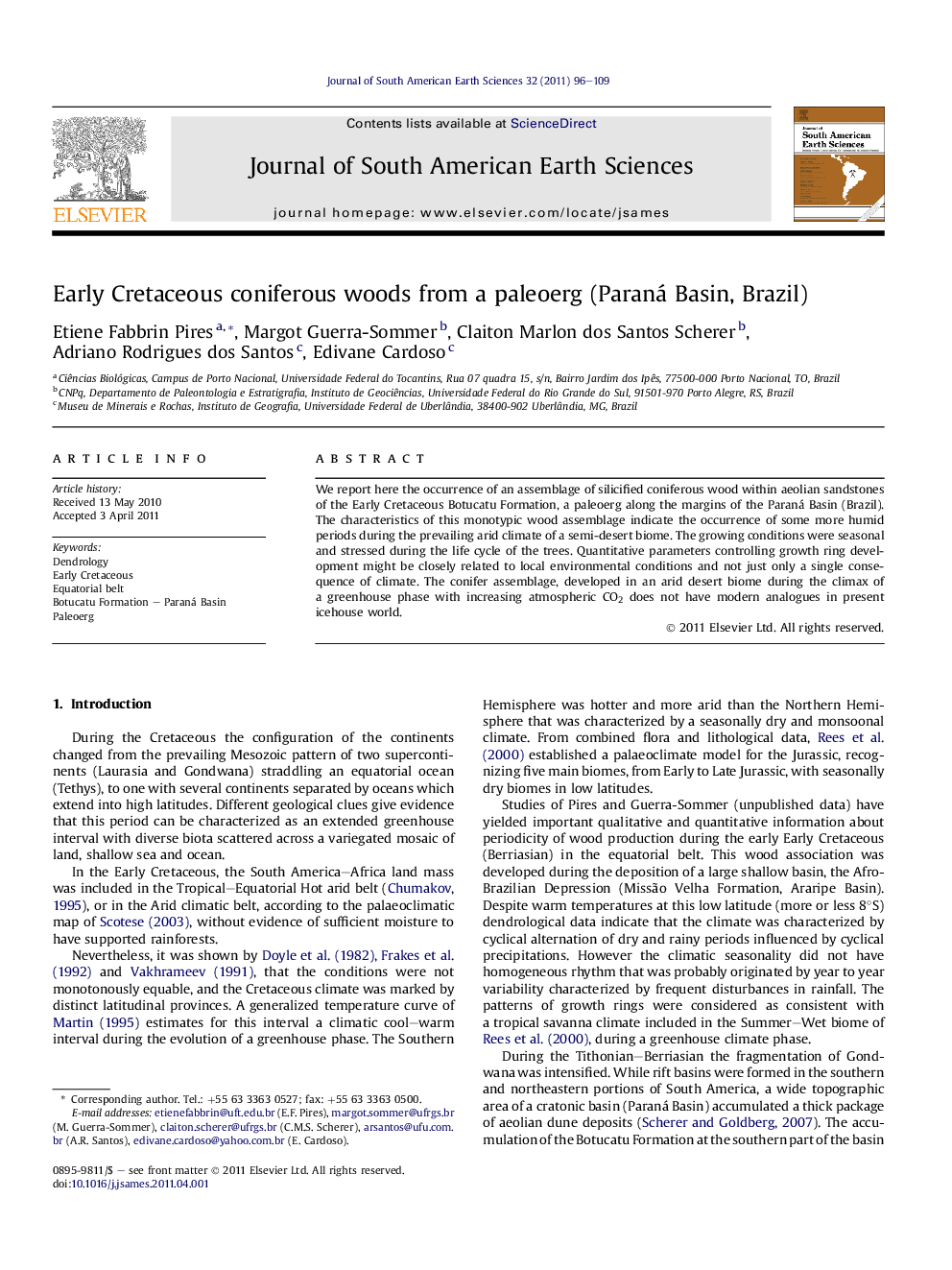| Article ID | Journal | Published Year | Pages | File Type |
|---|---|---|---|---|
| 4682622 | Journal of South American Earth Sciences | 2011 | 14 Pages |
We report here the occurrence of an assemblage of silicified coniferous wood within aeolian sandstones of the Early Cretaceous Botucatu Formation, a paleoerg along the margins of the Paraná Basin (Brazil). The characteristics of this monotypic wood assemblage indicate the occurrence of some more humid periods during the prevailing arid climate of a semi-desert biome. The growing conditions were seasonal and stressed during the life cycle of the trees. Quantitative parameters controlling growth ring development might be closely related to local environmental conditions and not just only a single consequence of climate. The conifer assemblage, developed in an arid desert biome during the climax of a greenhouse phase with increasing atmospheric CO2 does not have modern analogues in present icehouse world.
► fossil coniferous wood association indicates moisture in paleoerg. ► basal flared stems and “in situ” roots points to a hypoautochthonous-autochthonous deposition. ► growth rings indicate cyclical variation in tree growing conditions. ► parameters controlling growth ring development were related with environment.
